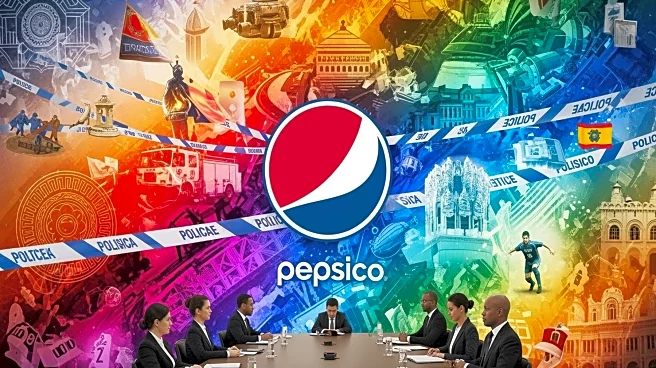What's Happening?
PepsiCo Foods North America, under the leadership of CMO Hernán Tantardini, is undergoing a strategic transformation to embed itself more deeply in food culture. With a household penetration of 99%, PepsiCo is shifting its focus from merely building strong
brands to creating entire categories. This approach involves celebrating food rituals, partnering with farmers, and engaging in cultural storytelling. For instance, PepsiCo has collaborated with third-generation potato farmers and National Geographic to highlight the origins of Lay's chips, emphasizing their agricultural roots. The company is also exploring new business models, such as supporting street food vendors in Mexico, which has led to the creation of micro-entrepreneurs. This cultural reinvention aims to make PepsiCo's brands more human and grounded.
Why It's Important?
This strategic shift is significant as it reflects a broader trend in the food industry where companies are moving beyond traditional marketing to engage with consumers on a cultural level. By focusing on storytelling and cultural connections, PepsiCo aims to differentiate itself in a saturated market and drive growth. This approach not only enhances brand loyalty but also opens up new revenue streams by tapping into local food cultures and traditions. The emphasis on agriculture and partnerships with farmers also highlights a commitment to sustainability and transparency, which are increasingly important to consumers. This transformation could set a precedent for other companies in the industry to follow, potentially reshaping how food brands interact with their audiences.
What's Next?
PepsiCo's next steps involve continuing to explore and expand its cultural storytelling initiatives. The company plans to further integrate its brands into local food cultures and traditions, potentially leading to new product innovations and marketing campaigns. As PepsiCo deepens its partnerships with farmers and other stakeholders, it may also focus on sustainability initiatives that align with consumer values. The success of these efforts could influence other companies to adopt similar strategies, leading to a broader industry shift towards cultural engagement and storytelling.













